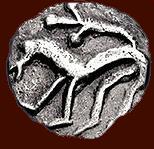




Designed by Nigel G Wilcox

The Paragon Of Metal Detecting
& Archaeology
& Archaeology
Powered By Sispro1
Anglo-Saxon . - Currency Numismatics,
For Reference ONLY
Everything For The Detectorist
**
Copyright All Rights Reserved by Nigel G Wilcox E-Mail: ngwilcox100@gmail.com
Viking Menu
Viking Timeline
Anglo-Saxon Timeline
1.
5.
What was early medieval monetary units:
- Scilling or Thrymsa: Gold coins in the period c.600-75. Thereafter only a unit of account of
4, 5 or 12 pennies in different times and places.
- Pund or Pound: Weight or unit of account. 240 pennies. Not coined.
- Sceat: 20 to the shilling. Weight of gold or silver. Probably not actually
coined..
- Paening or Penny: Silver coin, unit of account from c.675
- Mancus: Arabic term borrowed into medieval Latin, initially to refer to gold
coins or weights. Equated to 30 pennies
Early Medieval Prices
30 pence = compensation for an ox, 920s/30s
20 pence = compensation for a cow, 920s/30s
10 pence = compensation for a pig, 920s/30s
5 pennies = compensation for a sheep, 920s/30s
4 denarii = maximum price for a modius of wheat, 794 (=c. 40kg)
3 denarii = maximum price for a modius of rye 794
2 denarii = maximum price for a modius of oats, 794
4 denarii = wine for a group of women in Dorestad, c. 870
- Scilling or Thrymsa: Gold coins in the period c.600-75. Thereafter only a unit of account of
4, 5 or 12 pennies in different times and places.
- Pund or Pound: Weight or unit of account. 240 pennies. Not coined.
- Sceat: 20 to the shilling. Weight of gold or silver. Probably not actually
coined..
- Paening or Penny: Silver coin, unit of account from c.675
- Mancus: Arabic term borrowed into medieval Latin, initially to refer to gold
coins or weights. Equated to 30 pennies
Early Medieval Prices
30 pence = compensation for an ox, 920s/30s
20 pence = compensation for a cow, 920s/30s
10 pence = compensation for a pig, 920s/30s
5 pennies = compensation for a sheep, 920s/30s
4 denarii = maximum price for a modius of wheat, 794 (=c. 40kg)
3 denarii = maximum price for a modius of rye 794
2 denarii = maximum price for a modius of oats, 794
4 denarii = wine for a group of women in Dorestad, c. 870


Small Money

Silver Penny, Harold II 1066 AD

A cut half penny, AEthelred II 978-1016 AD


Silver halfpenny from the Royal Mint - Edgar 959-975 AD


Copper-alloy 'styca', Redwulf of Northumbria c.844
Bigger Money


Gold Dinar, imitating Arabic issue of AH 147/ AD 773-4, Offa of Mercia 757-796 AD

Crucible melt of at least 12 silver dirhams (one dated 782/3) and two pieces of hacksilver. Found at Kaupang Norway; estimated made c. 850-900
6. Menu
Pages
Main Coin Menu
Member NCMD
Anglo-Saxon
Menu
Menu






















